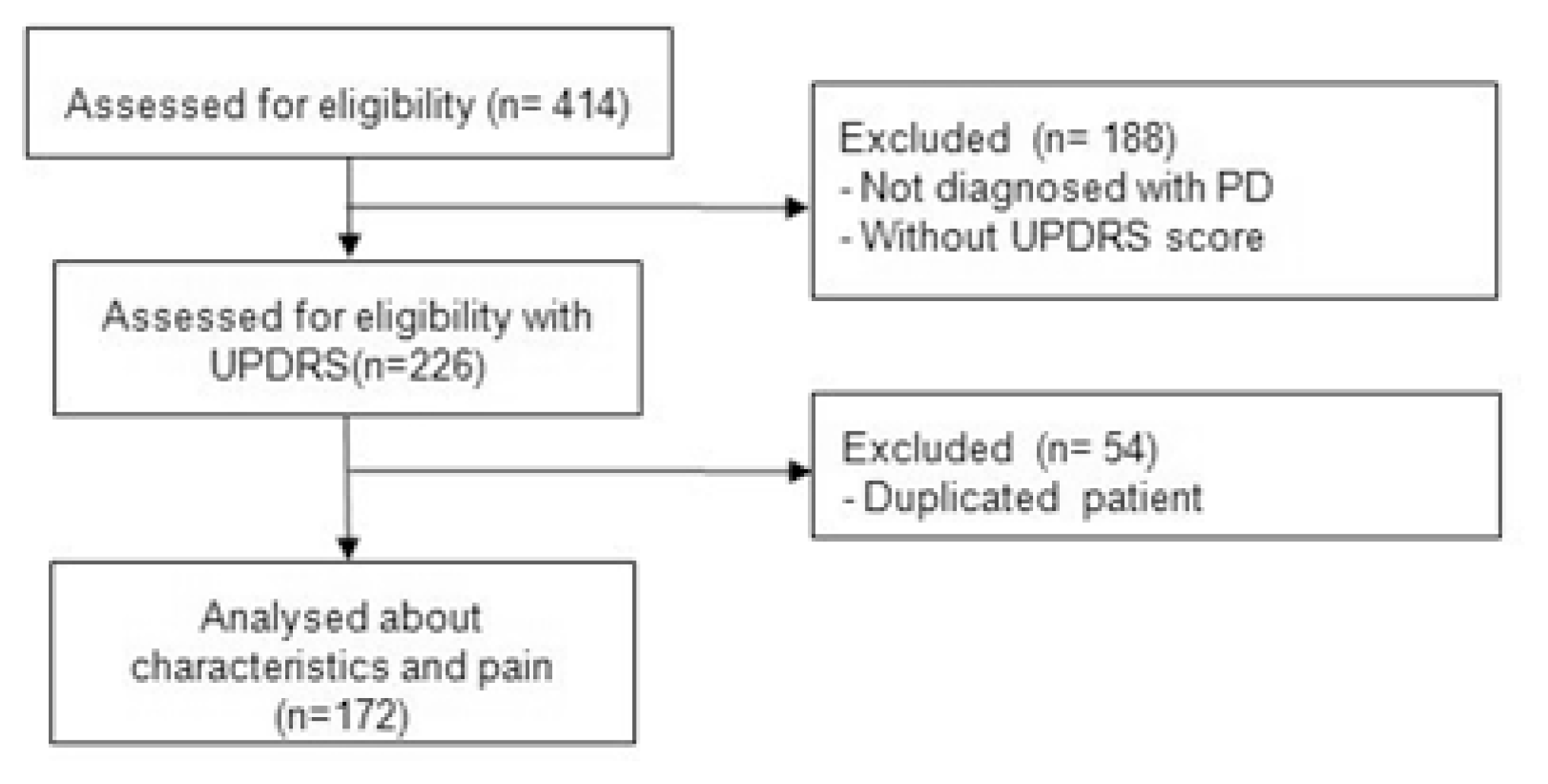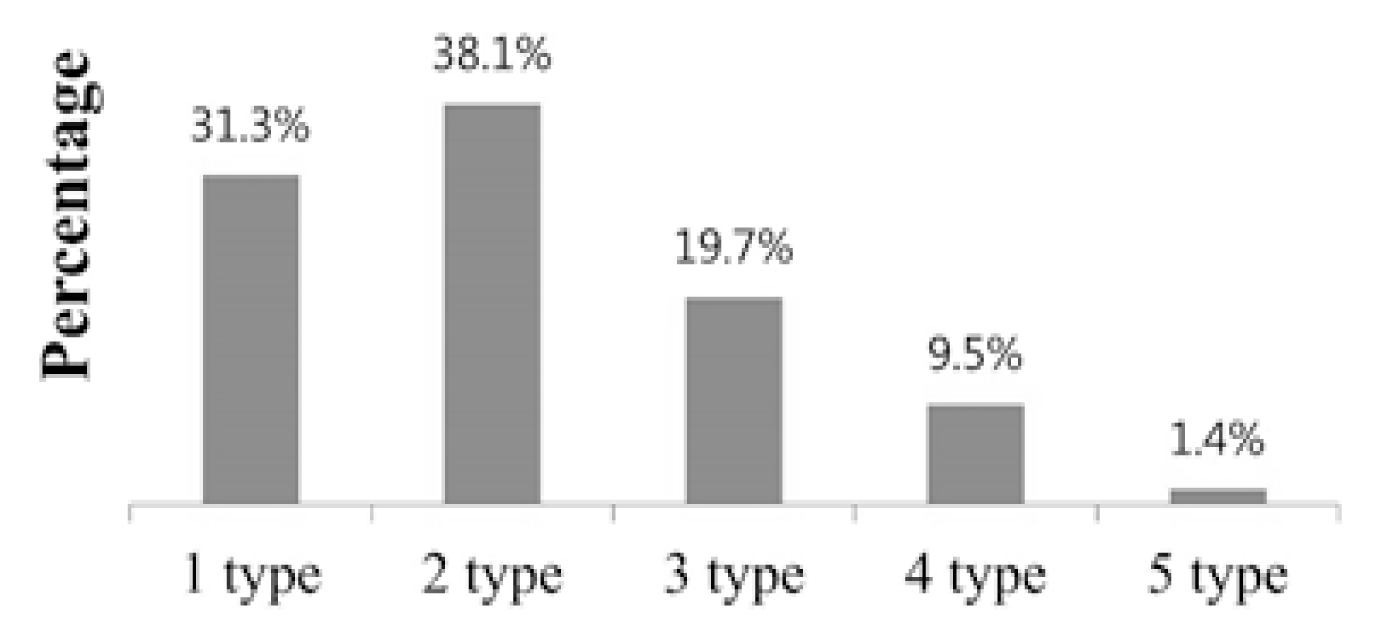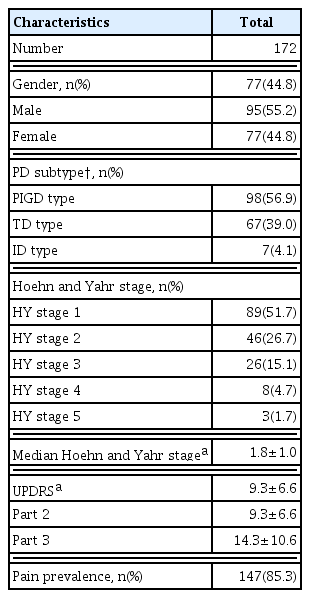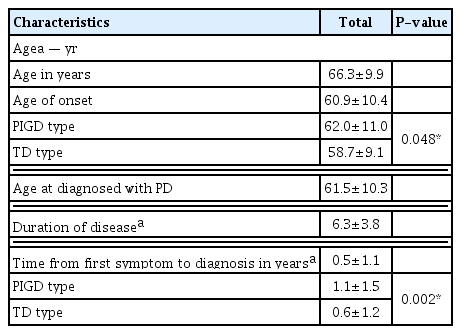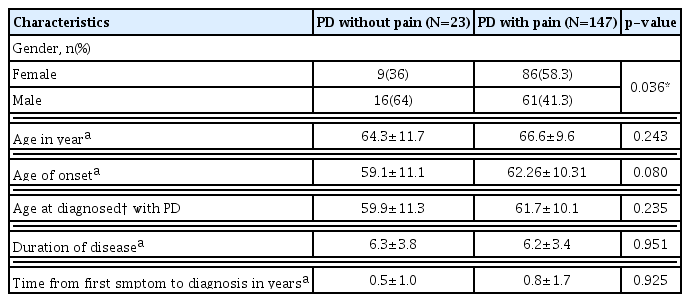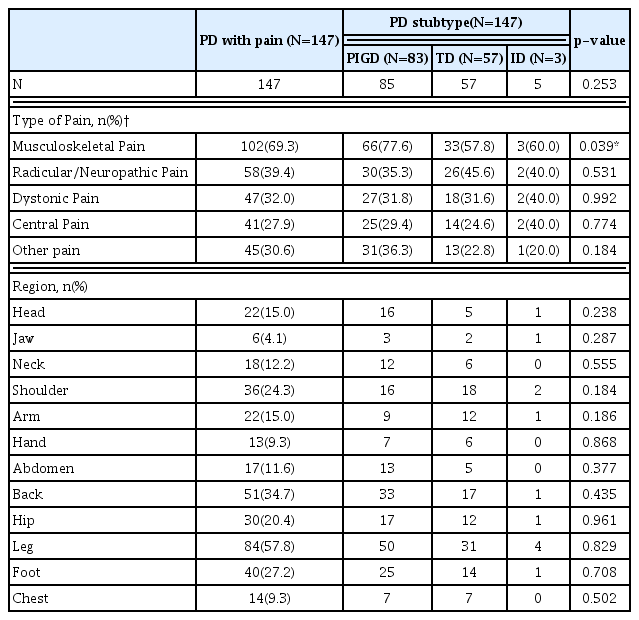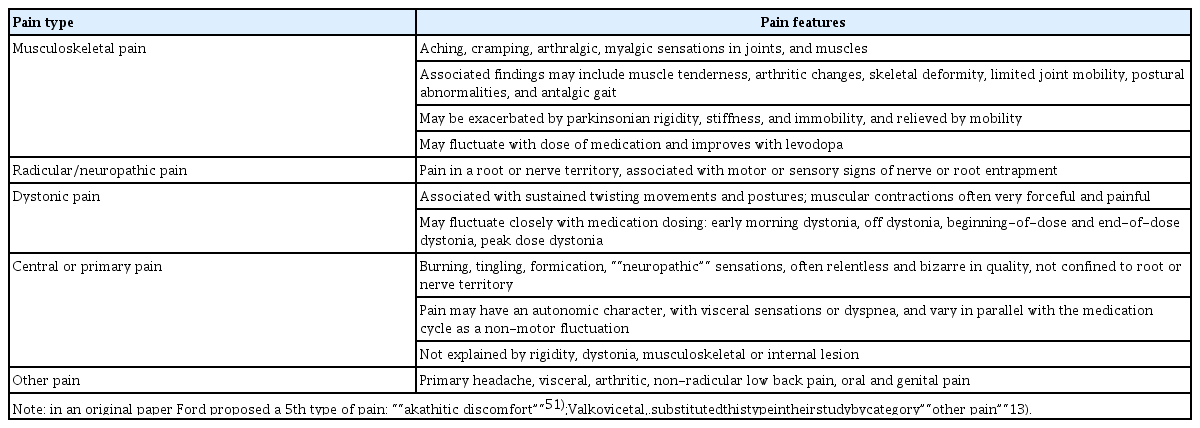References
1. Association of Korean Medicine Professors for Cardiovascular and Neurologic Medicine. Cardiovascular and Neurological Medicine in Korean Medicine 3 Seoul: WOORI Medical Books; 2016. p. 113–114.
2. Gelb DJ, Oliver E, Gilman S. Diagnostic Criteria for Parkinson Disease. JAMA Neurol 1999;56(1):33–39.
3. Buhmann C, Wrobel N, Grashorn W, et al. Pain in Parkinson disease: a cross-sectional survey of its prevalence, specifics, and therapy. J Neurol 2017;264(4):758–769.
4. Broen MPG, Braaksma MM, Patijn J, Weber WEJ. Prevalence of pain in Parkinson’s disease: a systematic review using the modified QUADAS tool. Mov Disord 2012;27(4):480–484.
5. Zhang LM, Chen YQ, Li WJ, Sun W, Huang Y, Zou HQ. Association between mutations of SCN9A gene and pain related to Parkinsonism. Chinese J Med Genet 2013;30(1):17–20.
6. Greenbaum L, Tegeder I, Barhum Y, Melamed E, Roditi Y, Djaldetti R. Contribution of genetic variants to pain susceptibility in Parkinson disease. Eur J Pain 2012;16(9):1243–1250.
7. Rukavina K, Leta V, Sportelli C, et al. Pain in Parkinson’s disease: New concepts in pathogenesis and treatment. Curr Opin Neurol 2019;32(4):579–588.
8. Trenkwalder C, Chaudhuri KR, Martinez MP, et al. Prolonged-release oxycodone-naloxone for treatment of severe pain in patients with Parkinson’s disease (PANDA): A double-blind, randomised, placebo-controlled trial. Lancet Neurol 2015;14(12):1161–1170.
9. Valkovic P, Minar M, Singliarova H, et al. Pain in Parkinson’s disease: A cross-sectional study of its prevalence, types, and relationship to depression and quality of life. PLoS One 2015;10(8)
10. Jankovic J, McDermott M, Carter J, et al. Variable expression of Parkinson’s disease: A base-line analysis of the DAT ATOP cohort. Neurology 1990;40(10):1529–1529.
11. Pont-Sunyer C, Hotter A, Gaig C, et al. The onset of nonmotor symptoms in parkinson’s disease (the onset pd study). Mov Disord 2015;30(2):229–237.
12. Chaudhuri KR, Rizos A, Trenkwalder C, et al. King’s Parkinson’s disease pain scale, the first scale for pain in PD: An international validation. Mov Disord 2015;30(12):1623–1631.
13. Ministry of Employment and Labor. 2012 Korean Longitudinal Study of Ageing(KLoSA) Korea Employment Information Service; 2013.
14. Duvoisin RC, Marsden CD. Note on the scoliosis of Parkinsonism. J Neurol Neurosurg Psychiatry 1975;38(8):787–793.
15. Djaldetti R, Shifrin A, Rogowski Z, Sprecher E, Melamed E, Yarnitsky D. Quantitative measurement of pain sensation in patients with Parkinson disease. Neurology 2004;62(12):2171–2175.
16. Gerdelat-Mas A, Simonetta-Moreau M, Thalamas C, et al. Levodopa raises objective pain threshold in Parkinson’s disease: A RIII reflex study. J Neurol Neurosurg Psychiatry 2007;78(10):1140–1142.
17. Gandolfi M, Geroin C, Antonini A, Smania N, Tinazzi M. Understanding and Treating Pain Syndromes in Parkinson’s Disease. International Review of Neurobiology 134Academic Press Inc; 2017. p. 827–858.
18. Jarcho JM, Mayer EA, Jiang ZK, Feier NA, London ED. Pain, affective symptoms, and cognitive deficits in patients with cerebral dopamine dysfunction. Pain 2012;153(4):744–754.
19. Hanagasi HA, Akat S, Gurvit H, Yazici J, Emre M. Pain is common in Parkinson’s disease. Clin Neurol Neurosurg 2011;113(1):11–13.
20. Tinazzi M, Del Vesco C, Fincati E, et al. Pain and motor complications in Parkinson’s disease. J Neurol Neurosurg Psychiatry 2006;77(7):822–825.
21. Müller T, Muhlack S, Woitalla D. Pain perception, pain drug therapy and health status in patients with Parkinson’s disease. Neuroepidemiology 2011;37(3–4):183–187.
22. Scott B, Borgman A, Engler H, Johnels B, Aquilonius SM. Gender differences in Parkinson’s disease symptom profile. Acta Neurol Scand 2000;102(1):37–43.
23. Han CS, Pae CU. Pain and Depression: A Neurobiological Perspective of Their Relationship. Psychiatry Investig 2015;12(1):1–8.
24. Beiske AG, Loge JH, Rønningen A, Svensson E. Pain in Parkinson’s disease: Prevalence and characteristics. Pain 2009;141(1–2):173–177.
25. Jankovic J, McDermott M, Carter J, et al. Variable expression of Parkinson’s disease: A base-line analysis of the DAT ATOP cohort. Neurology 1990;40(10):1529–1529.
26. Jankovic J, Kapadia AS. Functional decline in Parkinson disease. Arch Neurol 2001;58(10):1611–1615.
27. Stebbins GT, Goetz CG, Burn DJ, Jankovic J, Khoo TK, Tilley BC. How to identify tremor dominant and postural instability/gait difficulty groups with the movement disorder society unified Parkinson’s disease rating scale: comparison with the unified Parkinson’s disease rating scale. Mov Disord 2013;28(5):668–670.
28. Eisinger RS, Hess CW, Martinez-Ramirez D, et al. Motor subtype changes in early Parkinson’s disease. Park Relat Disord 2017;43:67–72.
29. Kotagal V. Is PIGD a legitimate motor subtype in Parkinson disease? Ann Clin Transl Neurol 2016;3(6):473–477.
30. Zella MAS, May C, Müller T, et al. Landscape of pain in Parkinson’s disease: impact of gender differences. Neurol Res 2019;41(1):87–97.
